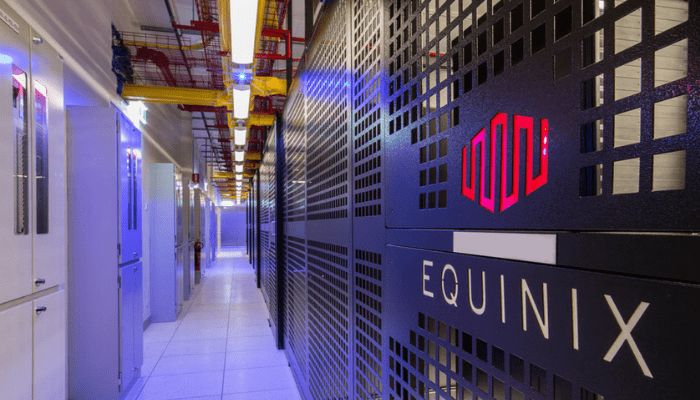Executives like to say they are “integrating AI.” But most still treat artificial intelligence as a feature, not a foundation: they add a chatbot here, an automated report there, and call it transformation. That’s the same mistake companies made in the early days of the web: building websites as brochures instead of re-thinking their business models around digital interaction.
AI is not a feature. It’s a architectural layer that will reshape every workflow, decision, and product. Those who treat it as decoration will fade, those who treat it as structure will lead.
From automation to agency
As product strategist Connor Davis noted, “every great company will soon have an agentic layer, a system that not only automates tasks but also orchestrates them across functions.” The distinction is crucial.
Automation is about efficiency: doing existing tasks faster or cheaper. Agency is about delegation: letting the system make decisions, coordinate actions, and even manage other software on your behalf. Think of it as moving from tools that execute commands to assistants that understand context.
The leap is subtle but profound. When a finance team uses an LLM to summarize quarterly reports, that’s automation. When the same system proactively flags anomalies, adjusts forecasts, and alerts the CFO with recommendations, that’s agency.
Companies that understand this shift are already reorganizing around it. They are not adding AI to workflows: they are building workflows around AI.
What an ‘AI-first’ roadmap really means
To be “AI-first” doesn’t mean using the latest model or adding generative features. It means designing products and processes that assume continuous intelligence at their core.
Andrew Bolis captured this well: “AI will become the orchestration layer across every SaaS tool. Instead of humans jumping between apps, agents will execute intent across systems.”
That’s the future of enterprise software. Today’s SaaS stack forces humans to be the middleware: copying data between CRMs, spreadsheets, and dashboards. Tomorrow’s agentic layer will do that work automatically, turning enterprise systems from silos into a single, adaptive “organisms”. And here’s no less than a biologist telling you so, and a few years in advance.
This evolution mirrors what happened when APIs transformed the web. At first, companies built isolated web apps: then APIs connected them. Now AI agents will do the connecting… and the deciding too.
The three pillars of an AI-first architecture
From what we’re seeing across industries, AI-first organizations share three foundational traits:
- A data substrate, not a data warehouse
Traditional data systems store information; AI-first systems understand it. That means building contextual layers, from embeddings, to knowledge graphs and retrieval systems) that make data retrievable in natural language and usable in real time. - A semantic interface
If your team still clicks through dashboards, you’re behind. The AI-first enterprise interacts through language: voice, text, or context-aware prompts. The interface becomes conversational because the workflow becomes cognitive. - An agentic layer
Every AI-first company needs an orchestration layer that can act autonomously within defined boundaries. Agents handle not just information retrieval but task execution, generating code, scheduling, procurement, customer response, and compliance checks. The challenge isn’t whether they work: it’s how much you trust them to decide.
The cultural reset executives must lead
This is not a technical project: it’s a cultural one. Building an AI-first organization requires leaders to unlearn decades of linear thinking about processes and hierarchy.
The question is no longer how can technology support our employees, but how can employees supervise technology that works alongside them. The manager of the near future won’t just oversee people: they’ll coordinate agents.
Executives who think in terms of software adoption will miss this entirely. The right question isn’t which vendor’s AI tool to buy, but which decisions you’re ready to delegate to a machine.
That shift demands a new kind of governance: clear ethical boundaries, data transparency, and oversight mechanisms that ensure AI recommendations remain auditable and explainable. Companies that fail to define those boundaries early will end up with AI that works… but works for the wrong goals.
The new competitive advantage
The competitive edge in the AI era won’t come from access to the biggest model or most GPUs. It will come from organizational adaptabilityor the ability to incorporate AI decision-making without losing accountability.
In every industry, a similar pattern will emerge: the incumbents will integrate AI as a feature, the challengers will rebuild their stack around it. The difference will show up in speed: companies that treat AI as infrastructure will compress decision cycles from weeks to hours. Those that don’t will move at human speed while their competitors move at machine speed.
But don’t confuse velocity with chaos. The best AI-first companies aren’t automating indiscriminately: they’re orchestrating intelligently. They designed human-in-the-loop architectures where humans remain the moral and strategic governors, and AI handles execution at scale.
Building the agentic future responsibly
The temptation, of course, is to delegate everything. After all, if agents can optimize marketing spend, supply chains, and code deployment, why not let them? The reason is simple: trust is earned, not automated.
AI agents must be auditable, their decisions explainable and reversible. Without that, an organization risks the “black box syndrome” that has already plagued large-scale AI deployments. I’ve written before about this risk in Fast Company: when you build on systems you don’t understand, you surrender control.
Agentic systems make that surrender seductive. They don’t crash, they comply. And that’s precisely why they’re dangerous if left unsupervised. Remember the paperclip maximizer…
Practical steps for executives
For leaders beginning their AI-first journey, here’s a roadmap:
- Start with one value chain
Pick a process with measurable outcomes such as customer service, logistics, or internal reporting, and prototype an agentic version. Don’t start with chatbots, start with impact. - Form an AI governance board
Blend technical and ethical oversight early. You’ll need both to scale safely. - Invest in retraining
Your teams don’t need prompt engineers: they need problem-framers who understand what can and can’t be delegated. - Keep data open inside the enterprise
AI thrives on accessibility, not silos. Build policies for responsible internal sharing. - Measure decision latency, not output volume
The real gain from AI-first design isn’t producing more: it’s deciding faster.
From feature to foundation
AI is no longer the icing on the product: it’s the yeast in the dough. It changes everything from the inside out.
Companies that understand this will design architectures where agents and humans collaborate seamlessly, data flows freely, and decisions happen in real time. Those that don’t will keep bolting AI onto outdated systems and wondering why nothing truly changes.
The agentic future isn’t coming: it’s already here. The only question left is whether your company is ready to stop piloting and start delegating.
The early-rate deadline for Fast Company’s World Changing Ideas Awards is Friday, November 14, at 11:59 pm PT. Apply today.











